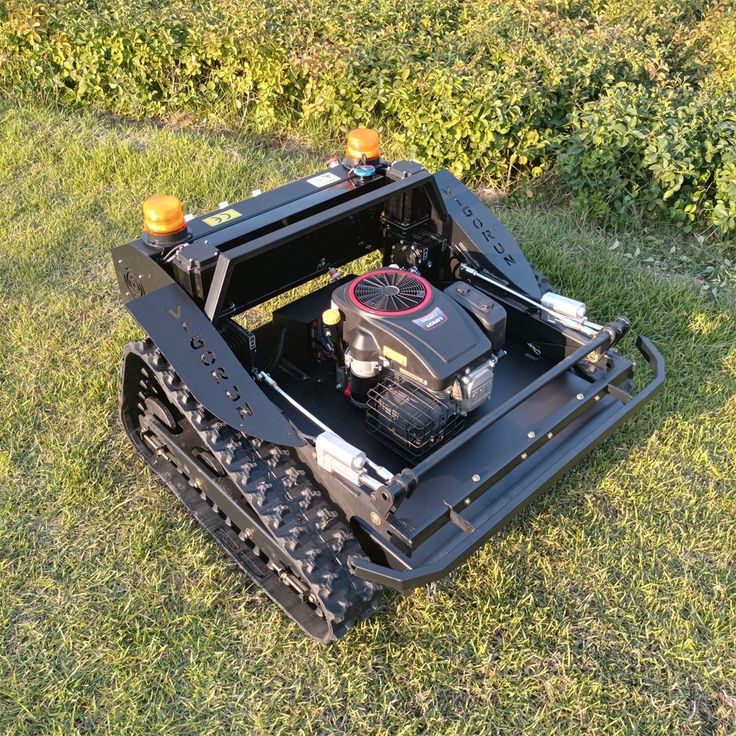The landscape of lawn care has been dramatically reshaped by robotic lawn mowers, transforming a tedious chore into an effortless task. What began as simple automated cutters has evolved into sophisticated machines, thanks to continuous innovation in robotics, AI, and connectivity. As we look at the cutting edge of robot mower technology, several key advancements stand out, promising even greater efficiency, autonomy, and user convenience for homeowners worldwide.
1. Wire-Free Navigation Systems
Perhaps the most significant innovation is the move away from traditional boundary wires. Historically, installing a perimeter wire was the most time-consuming and often frustrating part of setting up a best robot mower. New technologies are eliminating this need:
- RTK-GPS (Real-Time Kinematic Global Positioning System): This highly accurate GPS technology provides centimeter-level precision, allowing mowers to navigate large and complex lawns without physical wires. Users can define virtual boundaries and “no-go” zones via a smartphone app, offering unparalleled flexibility.
- Vision-Based Navigation: Mowers equipped with cameras and advanced computer vision algorithms can “see” and map their environment, much like robotic vacuum cleaners. This allows for dynamic obstacle avoidance and intelligent path planning without any external setup.
- SLAM (Simultaneous Localization and Mapping): Combining various sensor data (e.g., LiDAR, cameras, ultrasonic), SLAM technology enables the mower to build a real-time map of its surroundings while simultaneously locating itself within that map.
These innovations simplify installation, allow for easier modification of mowing areas, and provide more precise coverage.
2. Advanced Obstacle Detection and Avoidance
Early robot mowers relied primarily on bump sensors, meaning they had to physically contact an obstacle to react. Modern mowers are far more intelligent:
- AI Object Recognition: Integrated cameras and AI algorithms allow mowers to identify and differentiate between various objects, such as garden hoses, pet toys, fallen branches, or even small animals. This enables them to avoid specific items rather than just bumping into everything, preventing damage and improving safety.
- Ultrasonic and Radar Sensors: These sensors detect objects before contact, allowing the mower to slow down, reroute, or stop smoothly, minimizing collisions and ensuring a safer operation, especially around pets and children.
- Dynamic Obstacle Avoidance: The ability to react to moving objects in real-time is a hallmark of these advanced systems, ensuring the mower operates safely in active environments.
3. Enhanced Connectivity and Smart Home Integration
Wireless connectivity has transformed robot mowers into truly smart appliances:
- Wi-Fi and Cellular Connectivity: Beyond basic Bluetooth, Wi-Fi allows for remote control and monitoring within home network range, while cellular connectivity (often with a subscription) provides control from anywhere, crucial for large properties or anti-theft tracking.
- Smartphone Apps: Intuitive apps offer comprehensive control, real-time status updates, detailed scheduling, multi-zone management, and even remote diagnostics.
- Voice Assistant Integration: Compatibility with Amazon Alexa and Google Assistant enables hands-free operation, allowing users to start, stop, or send the mower home with simple voice commands.
- IFTTT (If This Then That) Support: This allows for custom automation rules, linking the mower’s actions to other smart devices or external conditions (e.g., pausing mowing if a smart weather station detects rain).
4. Improved Battery Technology and Charging Efficiency
Longer runtimes and faster charging are continuously being refined:
- Higher Capacity Lithium-Ion Batteries: Batteries are becoming more energy-dense, allowing mowers to cover larger areas on a single charge.
- Fast Charging: Proprietary technologies enable batteries to recharge significantly faster, minimizing downtime and maximizing mowing time.
- Intelligent Charging Management: Systems that optimize the charging process extend battery lifespan and ensure the mower is always ready for its next scheduled cut.
5. Specialized Features for Diverse Landscapes
Manufacturers are developing mowers tailored for specific lawn challenges:
- All-Wheel Drive (AWD): For hilly or uneven terrains, AWD systems provide superior traction and stability, allowing mowers to tackle steep slopes that were previously unmanageable.
- Adjustable Cutting Heights (Electronic): Beyond manual levers, electronic height adjustment via an app offers precise control and the ability to set different cutting heights for various zones.
- Edge Cutting Precision: Designs that allow blades to cut closer to the perimeter, minimizing the need for manual trimming along edges.
- Self-Cleaning Mechanisms: Innovations in deck design and blade materials reduce grass buildup, minimizing the frequency of manual cleaning.
Conclusion
The evolution of robot mower technology is driven by a relentless pursuit of greater autonomy, efficiency, and user convenience. From wire-free navigation to AI-powered obstacle avoidance and seamless smart home integration, these innovations are making robotic lawn care more accessible, reliable, and truly hands-off than ever before. As technology continues to advance, we can expect even more sophisticated and intelligent solutions to emerge, further simplifying the maintenance of a beautiful lawn.


